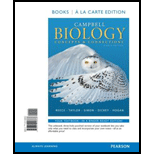
Concept explainers
a.
To compare: The electron transport and chemiosmosis on the basis of the source of electrons in mitochondria and chloroplast.
Concept introduction: Mitochondria are found in both plant and animal cells and are the site of oxidative phosphorylation. Chloroplasts are found in autotrophic organisms and are the site of light-dependent and light-independent reactions. Chloroplasts and mitochondria have DNA present in them to synthesize few proteins involved in few reactions inside them. Chloroplasts and mitochondria are said to be
b.
To compare: The electron transport and chemiosmosis on the basis of the mechanism by which the electrons gain high potential energy in mitochondria and chloroplast.
Concept introduction: Mitochondria are found in both plant and animal cells and are the site of oxidative phosphorylation. Chloroplasts are found in autotrophic organisms and are the site of light-dependent and light-independent reactions. Chloroplasts and mitochondria have DNA present in them to synthesize few proteins involved in few reactions inside them. Chloroplasts and mitochondria are said to be parasites that are sheltered inside the eukaryotic organisms as based on the endosymbiont theory. Chloroplasts and mitochondria are similar in several aspects.
c.
To compare: The electron transport and chemiosmosis on the basis of the molecules that collect the electron at the end of these chain.
Concept introduction: Mitochondria are found in both plant and animal cells and are the site of oxidative phosphorylation. Chloroplasts are found in autotrophic organisms and are the site of light-dependent and light-independent reactions. Chloroplasts and mitochondria have DNA present in them to synthesize few proteins involved in few reactions inside them. Chloroplasts and mitochondria are said to be parasites that are sheltered inside the eukaryotic organisms as based on the endosymbiont theory. Chloroplasts and mitochondria are similar in several aspects.
d.
To compare: The electron transport and chemiosmosis on the basis of the process by which the energy given up by the electrons is used.
Concept introduction: Mitochondria are found in both plant and animal cells and are the site of oxidative phosphorylation. Chloroplasts are found in autotrophic organisms and are the site of light-dependent and light-independent reactions. Chloroplasts and mitochondria have DNA present in them to synthesize few proteins involved in few reactions inside them. Chloroplasts and mitochondria are said to be parasites that are sheltered inside the eukaryotic organisms as based on the endosymbiont theory. Chloroplasts and mitochondria are similar in several aspects.
Want to see the full answer?
Check out a sample textbook solution
Chapter 7 Solutions
Campbell Biology: Concepts & Connections, Books a la Carte Plus Mastering Biology with eText -- Access Card Package (8th Edition)
- Describe the levels of structural hierarchy for the human body, starting with the organismal level and ending with the chemical level. In addition, you should make sure you link each level to the previous level, emphasizing the structural relationships.arrow_forward9 S es Read the section "Investigating Life: In (Extremely) Cold Blood." Then, drag and drop the terms on the left to complete the concept map. Red blood cells Genes Icefishes -have mutated have colorless Oxygen have few lack encode Blood Cellular respiration consists of- contain carries is a Platelets White blood cells carries low amounts of Hemoglobin is necessary for Plasma Protein Reset.arrow_forwardPlating 50 microliters of a sample diluted by a factor of 10-6 produced 91 colonies. What was the originalcell density (CFU/ml) in the sample?arrow_forward
- Every tutor here has got this wrong, don't copy off them.arrow_forwardSuppose that the population from question #1 (data is in table below) is experiencing inbreeding depression (F=.25) (and no longer experiencing natural selection). Calculate the new expected genotype frequencies (f) in this population after one round of inbreeding. Please round to 3 decimal places. Genotype Adh Adh Number of Flies 595 Adh Adh 310 Adhs Adhs 95 Total 1000 fladh Adh- flAdn Adh fAdhs Adharrow_forwardWhich of the following best describes why it is difficult to develop antiviral drugs? Explain why. A. antiviral drugs are very difficult to develop andhave no side effects B. viruses are difficult to target because they usethe host cell’s enzymes and ribosomes tometabolize and replicate C. viruses are too small to be targeted by drugs D. viral infections usually clear up on their ownwith no problemsarrow_forward
- This question has 3 parts (A, B, & C), and is under the subject of Nutrition. Thank you!arrow_forwardThey got this question wrong the 2 previous times I uploaded it here, please make sure it's correvct this time.arrow_forwardThis question has multiple parts (A, B & C), and under the subject of Nutrition. Thank you!arrow_forward
- Calculate the CFU/ml of a urine sample if 138 E. coli colonies were counted on a Nutrient Agar Plate when0.5 mls were plated on the NA plate from a 10-9 dilution tube. You must highlight and express your answerin scientific notatioarrow_forwardDon't copy off the other answer if there is anyarrow_forwardAnswerarrow_forward
 Human Anatomy & Physiology (11th Edition)BiologyISBN:9780134580999Author:Elaine N. Marieb, Katja N. HoehnPublisher:PEARSON
Human Anatomy & Physiology (11th Edition)BiologyISBN:9780134580999Author:Elaine N. Marieb, Katja N. HoehnPublisher:PEARSON Biology 2eBiologyISBN:9781947172517Author:Matthew Douglas, Jung Choi, Mary Ann ClarkPublisher:OpenStax
Biology 2eBiologyISBN:9781947172517Author:Matthew Douglas, Jung Choi, Mary Ann ClarkPublisher:OpenStax Anatomy & PhysiologyBiologyISBN:9781259398629Author:McKinley, Michael P., O'loughlin, Valerie Dean, Bidle, Theresa StouterPublisher:Mcgraw Hill Education,
Anatomy & PhysiologyBiologyISBN:9781259398629Author:McKinley, Michael P., O'loughlin, Valerie Dean, Bidle, Theresa StouterPublisher:Mcgraw Hill Education, Molecular Biology of the Cell (Sixth Edition)BiologyISBN:9780815344322Author:Bruce Alberts, Alexander D. Johnson, Julian Lewis, David Morgan, Martin Raff, Keith Roberts, Peter WalterPublisher:W. W. Norton & Company
Molecular Biology of the Cell (Sixth Edition)BiologyISBN:9780815344322Author:Bruce Alberts, Alexander D. Johnson, Julian Lewis, David Morgan, Martin Raff, Keith Roberts, Peter WalterPublisher:W. W. Norton & Company Laboratory Manual For Human Anatomy & PhysiologyBiologyISBN:9781260159363Author:Martin, Terry R., Prentice-craver, CynthiaPublisher:McGraw-Hill Publishing Co.
Laboratory Manual For Human Anatomy & PhysiologyBiologyISBN:9781260159363Author:Martin, Terry R., Prentice-craver, CynthiaPublisher:McGraw-Hill Publishing Co. Inquiry Into Life (16th Edition)BiologyISBN:9781260231700Author:Sylvia S. Mader, Michael WindelspechtPublisher:McGraw Hill Education
Inquiry Into Life (16th Edition)BiologyISBN:9781260231700Author:Sylvia S. Mader, Michael WindelspechtPublisher:McGraw Hill Education





